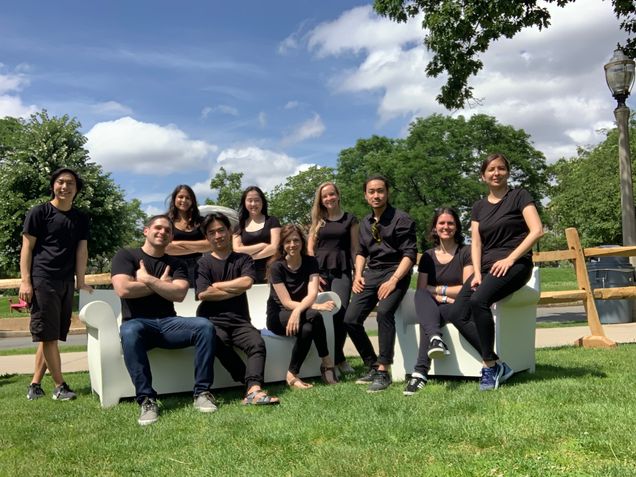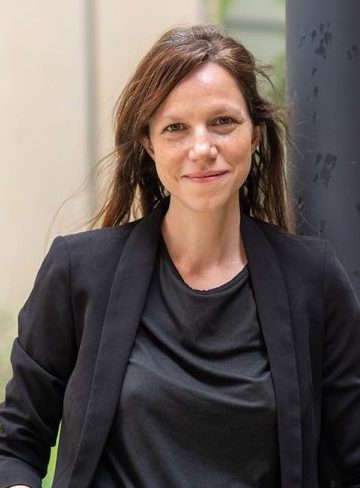By Andrew Thurston
Among the many acronyms and initialisms that the coronavirus has thrown into our lives—COVID-19, PPE—one of the most promising is mRNA. It’s shorthand for messenger ribonucleic acid, a molecule found in our cells that transmits the essential genetic instructions to build, maintain, and repair our bodies. For more than a year, a lab-made mRNA that helps teach our bodies how to take down COVID has been powering the vaccines that are saving lives.
With billions of shots successfully given worldwide, researchers are delving into other potential uses for the technology, such as vaccines for zika and malaria, as well as therapies for sickle cell anemia and cystic fibrosis. In a CAS lab, biologist Ana Fiszbein is exploring mRNA’s potential to treat—and prevent—a disease that strikes 1.8 million Americans every year, and kills more than 600,000: cancer.
“In my family, there’s a lot of cancer history,” says Fiszbein, an assistant professor who joined CAS in January 2021. “If I can do anything to help cancer patients, that’s what I’m for.”

In the Fiszbein Lab, she studies gene expression—how mRNA transmits genetic blueprints from the DNA in the heart of a cell, the nucleus, to its construction site, the cytoplasm, a semifluid substance that fills the cell.
“All our cells have the same DNA, but different cells express different genes—that’s the reason why they are so different,” says Fiszbein. “A cell in the top of my nose and the top of my finger are very different, but they have the exact same DNA sequence.”
From 24,000 genes, we can make around 100,000 different proteins, the life-giving molecules that make up our skin, bones, and muscles and help us fight infection, digest food, and utilize oxygen. Some genes are specialists, producing just one type of protein, others can generate hundreds using a process called alternative splicing. By deepening our knowledge of how mRNA carries directions and how they’re put to work, Fiszbein hopes to better understand what happens when the genetic process goes awry.
“I work on when and why our genes are turned on or off, trying to understand the exact molecular mechanisms that make a cell express one gene or another,” says Fiszbein, who has received funding from the Massachusetts Life Sciences Center and BU’s Rafik B. Hariri Institute for Computing and Computational Science & Engineering. “I focus on cancer: what is different in terms of gene expression, specific expression between a normal tissue and a cancer tissue. What is wrong, what’s happening, why these molecular mechanisms change, what triggers that.”

In some studies, Fiszbein and her team look at one gene in detail. In others, they use computing power and machine learning to look at what’s happening across the entire genome, a vast amount of data.
“We mix experimental and computational work,” says Fiszbein. She first landed in biology after working at the Buenos Aires Zoo in her native Argentina. After studying physiology, molecular biology, and biotechnology, she moved to the United States for a postdoc in computational biology at MIT. “My mom studied computer science and my grandad was a mathematician, so maybe I picked up a little bit of that background.”
Fiszbein’s dual approach is also mirrored in the expertise of the students working in her lab. As well as graduate students and a postdoctoral researcher, she has six undergraduates involved in research projects. Two are biology majors helping with the single gene experiments, while four—who either minor or major in computer science—grapple with the data generated by the broader studies.
“They have amazing ideas,” says Fiszbein, a recent innovation career development professorship awardee. “I really enjoy working with undergrads at BU.”
In a recent study, Fiszbein found that the journey from gene to protein doesn’t flow in just one direction. When it comes to alternative splicing, instructions can be passed back from a protein to support development elsewhere in the body: “The mRNA processing feeds back to transcription and mRNA synthesis,” she says.
“During cancer progression, there are many genes where we can change this splicing,” says Fiszbein. Eventually, it may be possible to teach the body to reject a cancer’s harmful cell differentiation instructions. “We’re trying to first understand what’s going on and then we develop strategies to manipulate that.”